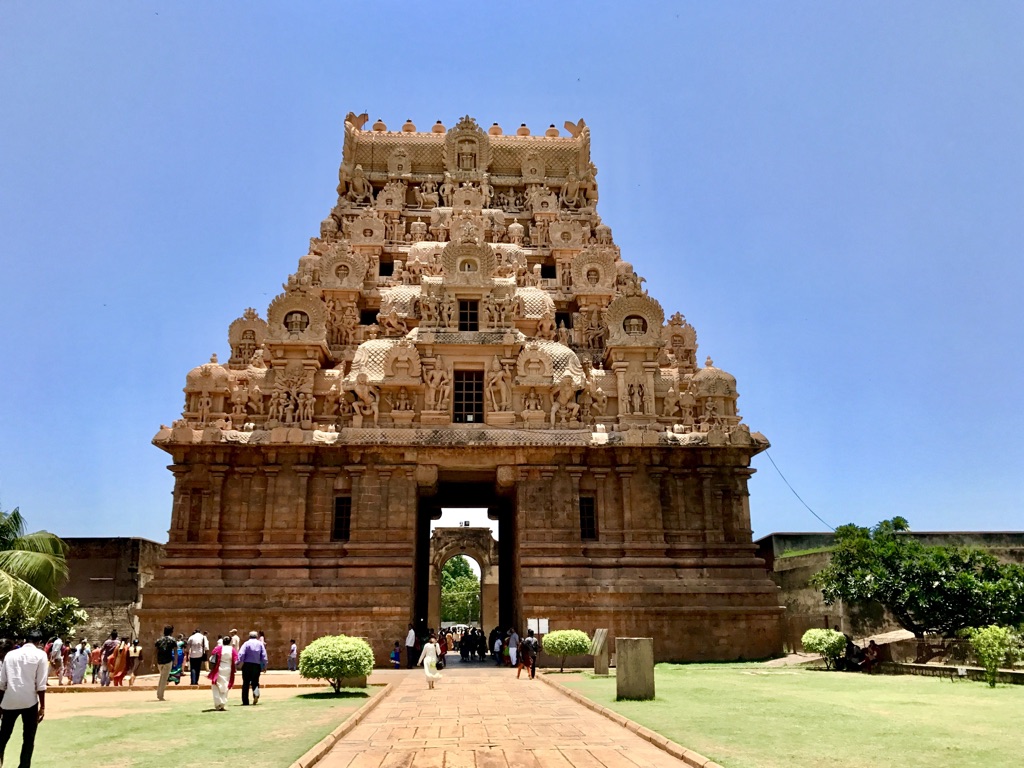The Brihadeeswarar Temple, also known as the Big Temple, is a marvel of ancient Indian architecture and a testament to the grandeur of the Chola dynasty. Located in Thanjavur, Tamil Nadu, it is a Hindu temple dedicated to Lord Shiva. Built by Emperor Rajaraja Chola I in 1010 AD, the temple is a part of the UNESCO World Heritage Site known as the “Great Living Chola Temples.” Its towering vimana (temple tower) stands at about 66 meters, making it one of the tallest of its kind. The temple’s intricate sculptures, frescoes, and architectural expertise reflect the zenith of Chola art and engineering.
Get your dose of History via Email
Historical Background of Brihadeeswarar Temple
The Brihadeeswarar Temple’s history is as grand as its structure. It was built by Rajaraja Chola I, one of the greatest emperors of the Chola dynasty. The temple’s construction began around 1002 AD and was completed in 1010 AD. It was an expression of the Chola dynasty’s wealth, power, and artistic prowess. The temple has stood the test of time, surviving centuries of political change and natural calamities. It continues to be an active house of worship and a symbol of Tamil culture.
Archaeological findings suggest that the temple was not only a religious center but also a hub for economic and social activities. Inscriptions found on the temple walls provide details about the administration, society, and economy of the period. The temple’s construction involved thousands of artisans and workers, indicating advanced organizational skills. The Brihadeeswarar Temple was a significant milestone in the history of South India, marking the golden age of Tamil civilization.
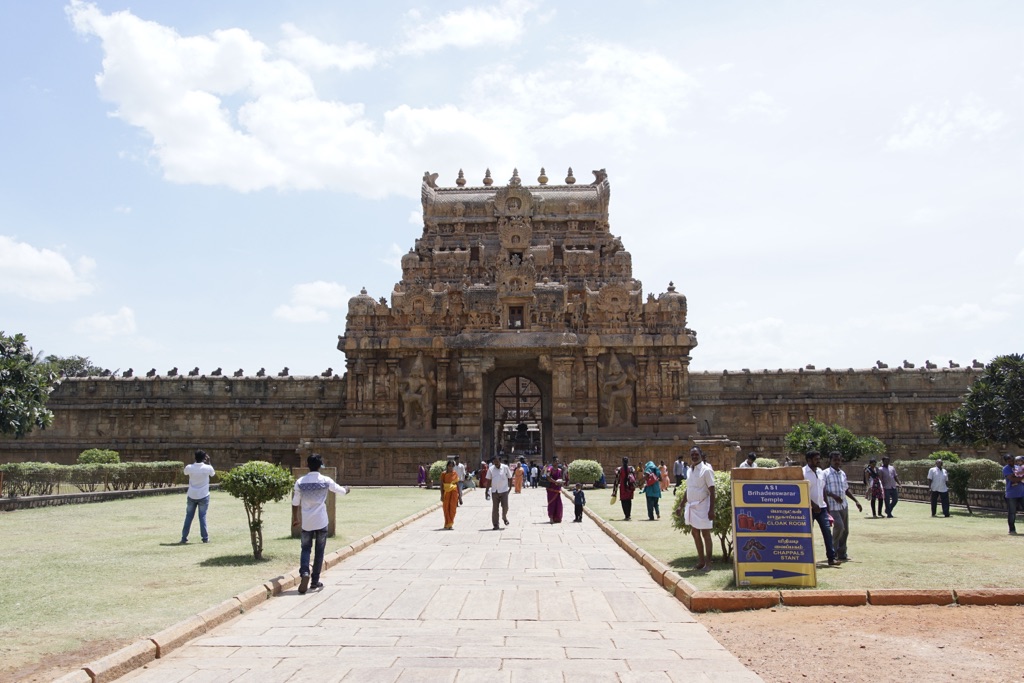
Over the years, the temple has seen various additions and modifications. Subsequent rulers and administrations have contributed to its upkeep and renovation. The Marathas and the British, who ruled Thanjavur at different times, have left their marks on the temple’s history. Despite these changes, the core structure remains as it was during the Chola period, preserving its original glory.
The temple has been the focal point of major historical events. It has witnessed royal ceremonies, patronage of arts, and performances of classical music and dance. The Brihadeeswarar Temple has also been a site of scholarly pursuit, with the temple premises housing an ancient library where palm-leaf manuscripts were once stored. The temple’s history is a reflection of the cultural and religious evolution of the region.
Today, the Brihadeeswarar Temple is not only a historical monument but also a living cultural heritage site. It attracts pilgrims, tourists, and scholars from around the world. The temple’s annual festivals are a vibrant display of Tamil Nadu’s rich traditions. The temple’s legacy continues to influence modern art, culture, and architecture, making it a timeless icon of Indian heritage.
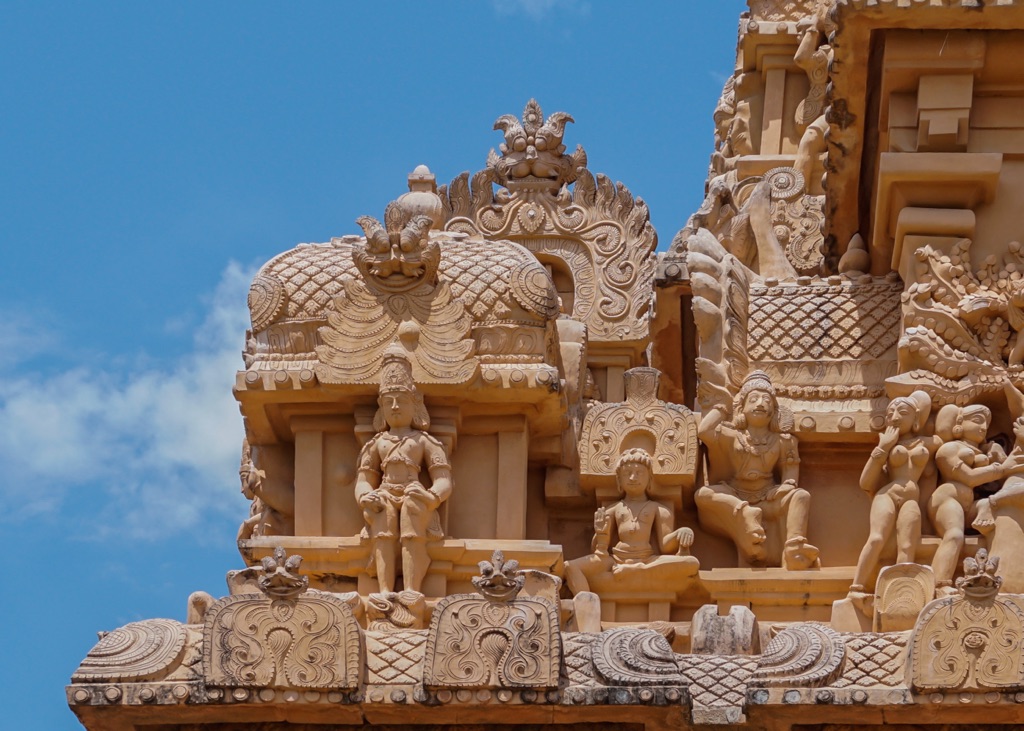
About Brihadeeswarar Temple
The Brihadeeswarar Temple is an architectural masterpiece of the Chola era. Its design adheres to the Dravidian style of architecture. The temple is renowned for its massive size and the intricacy of its sculptures. The central temple tower, or vimana, is one of the tallest in the world and is topped by an 80-tonne monolithic cupola. This architectural feat was achieved by the Cholas over a millennium ago, without the use of modern machinery.
The temple complex is fortified and has a vast courtyard. The main sanctum houses a colossal lingam, a symbolic representation of Lord Shiva. The walls of the temple are adorned with detailed bas-reliefs depicting Hindu mythology. The frescoes on the ceilings are original and have retained their vibrant colors despite the passage of time. The temple’s walls also feature inscriptions that provide valuable historical information.
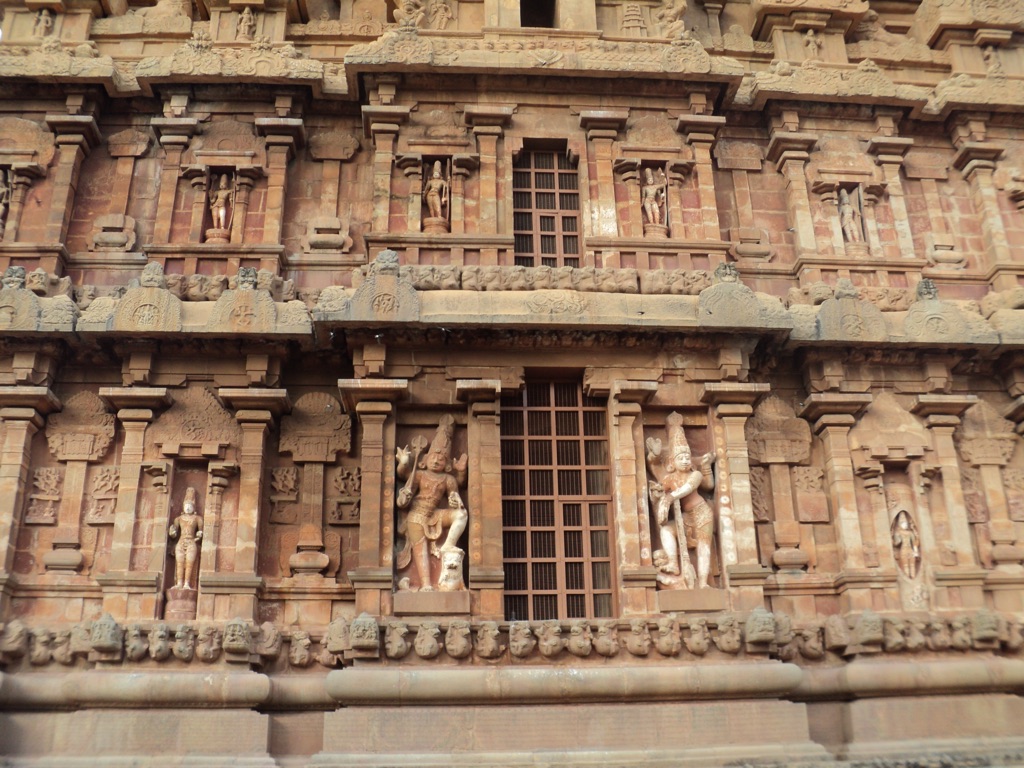
The construction of the temple involved the use of granite, a material not found in the immediate vicinity of Thanjavur. This indicates the logistical capabilities of the Cholas, who transported the heavy stone from distant quarries. The temple’s layout is designed in such a way that it harnesses the natural light, illuminating the sanctum and the artworks within.
The temple’s gopuram (gateway tower) is also noteworthy, with its elaborate carvings and towering presence. The Nandi bull, Lord Shiva’s mount, is depicted in a large monolithic sculpture facing the sanctum. The scale of the Nandi and its detailed craftsmanship are a testament to the Chola’s sculptural excellence.
The Brihadeeswarar Temple’s architectural features have influenced subsequent temple constructions in South India and Southeast Asia. Its design principles and decorations are seen as benchmarks of Hindu temple architecture. The temple stands as a symbol of the Chola dynasty’s vision and the timeless beauty of Indian art and architecture.
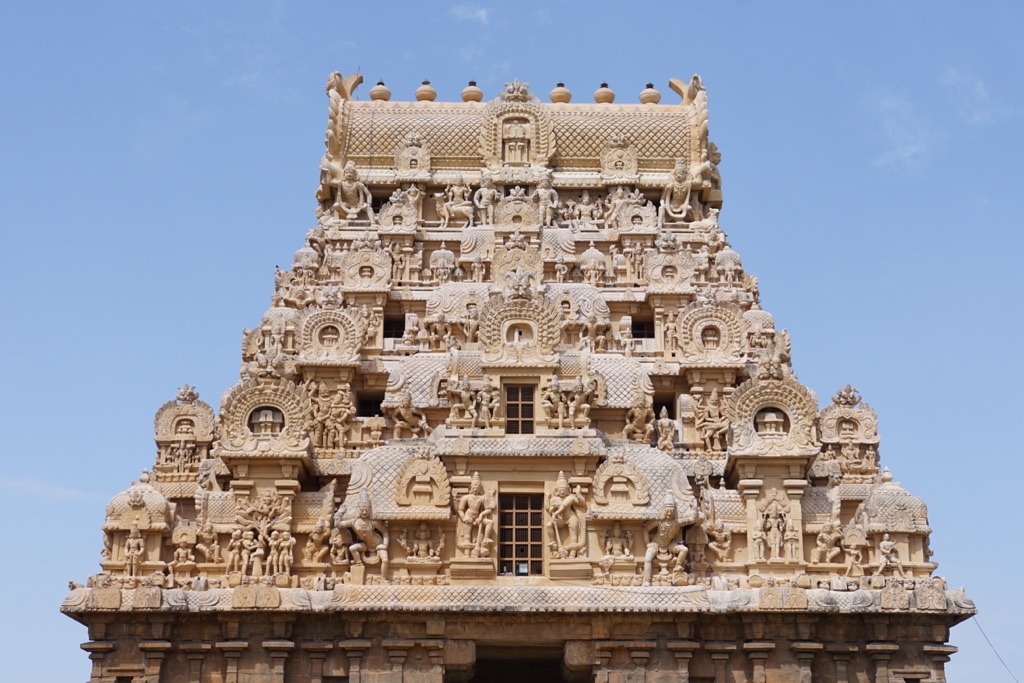
Theories and Interpretations
The Brihadeeswarar Temple has been the subject of various theories and interpretations over the years. Scholars have debated its symbolic significance and the intent behind its grand design. Some view the temple as a representation of the cosmic structure, with the vimana symbolizing the mythical Mount Meru, the axis of the universe in Hindu cosmology.
The temple’s layout and the positioning of its sculptures are thought to align with specific astronomical bodies. This has led to theories that the temple served an astronomical purpose, marking important celestial events. The inscriptions and artworks are also interpreted as records of the socio-political climate of the time, offering insights into the Chola dynasty’s governance.
Mysteries surround the construction techniques used to build the temple’s massive structures. The precise method of placing the 80-tonne cupola atop the vimana remains a topic of speculation. Some suggest the use of a ramp or an inclined plane that spiraled up the vimana, while others propose the use of elephants and pulleys.
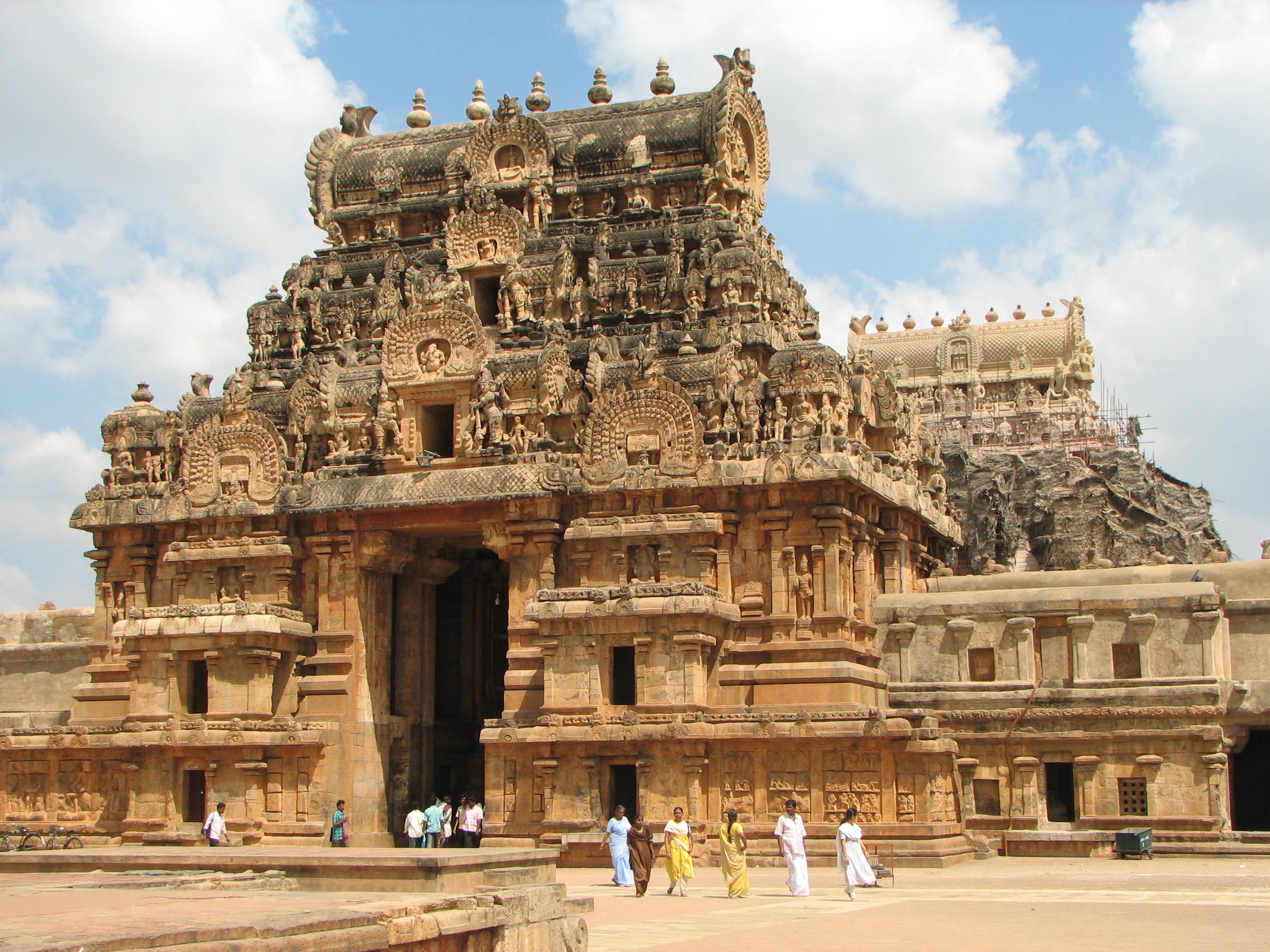
Interpretations of the temple’s iconography have evolved over time. The narratives depicted in the temple’s bas-reliefs are matched to historical records and religious texts to understand their context. The temple’s art is not only a reflection of the Chola’s religious devotion but also a medium of cultural expression and storytelling.
Dating of the temple has been carried out through inscriptions and architectural styles. Carbon dating and other scientific methods have not been extensively applied, as the temple is primarily constructed of stone, which is difficult to date using these techniques. However, the historical records and inscriptions provide a clear timeline of the temple’s construction and subsequent events.
At a glance
Country: India
Civilization: Chola Dynasty
Age: Over 1,000 years (Constructed in 1010 AD)

